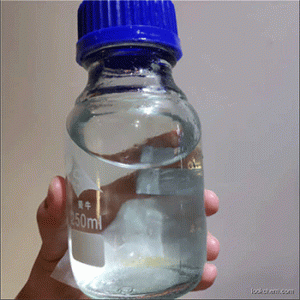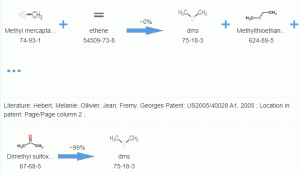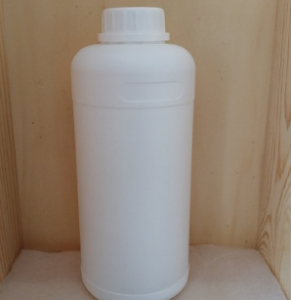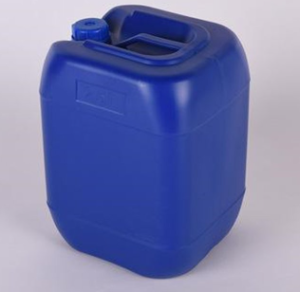Dimethyl sulfide

Specifications
| Item | Index |
| Density | 0.840-0.850 |
| Refractive index(n20D) | 1.423~1.441 |
| Boiling point,℃ | 38 |
| Flash point,℉ | -34 |
| Purity, % | ≥95.0 |
Packing & Storage
| Packing | 170kg drum or IBC |
| Storage | 20℃, 2 years. |
| Shipping | Room temperature in China; may vary elsewhere |
Free Quote
For samples, pricing, or more information, please call us at 0086 25 51192301 or mail to info@ascent-chem.com or fill out the following form.
We will respond to you as soon as possible.
Tel: 0086 25 51192301
E-mail: info@ascent-chem.com



General Information
| Common Names | Dimethyl sulfide| methyl monosulfide | ||||||
| Structure | |||||||
| CAS No. | 75-18-3 | Boiling Point (℃) | 38 °C(lit.) | ||||
| Molecular Weight | 62.13 | Melting Point (℃) | ‘−98 °C(lit.) | ||||
| Appearance | Colorless transparent liquid | Vapor Specific Gravity | 0.846 g/mL at 25 °C(lit.) | ||||
| HS Code | 2930909099 | Flash Point (℃) | ‘−34 °F | ||||
| Solubility | Autoignition Temperature (℃) | ||||||
| Safety Phrases | S7-S9-S16-S29-S33-S36/39-S26 | ||
| RIDADR | UN 1164 3/PG 2 | ||
| WGK Germany | 1 | ||
| Packaging Group | II | ||
| Hazard Class | 3 | ||
| SYMPTOMS | PREVENTION | FIRST AID | |
| Inhalation | Cough. Sore throat. | Use local exhaust or breathing protection. | Fresh air, rest. |
| Skin | Redness. Burning sensation. Itching. | Protective gloves. | Remove contaminated clothes. Rinse and then wash skin with water and soap. |
| Eyes | Redness. Pain. | Wear safety goggles. | First rinse with plenty of water for several minutes (remove contact lenses if easily possible), then refer for medical attention. |
| Ingestion | Abdominal pain. Nausea. Vomiting. | Do not eat, drink, or smoke during work. Wash hands before eating. | Rinse mouth. Induce vomiting (ONLY IN CONSCIOUS PERSONS!). Refer for medical attention . |

Frequently Asked Questions
Q: What is Dimethyl sulfide?
A: DMS Dimethyl Sulfide is an organic compound and is the simplest sulfide. Also, it is a colorless transparent liquid with an unpleasant odor. Insoluble in water, soluble in most organic solvents such as ethanol and ether. In nature, Dimethyl sulfide is often produced by protein decomposition, which is also one of the sources of marine fishy smell.
Q: How to store Dimethyl sulfide?
A: It needs to be stored in a cool and ventilated warehouse. Keep away from fire and heat sources, and the temperature of the warehouse should not exceed 29°C. The product packaging is required to be sealed and not in contact with air. It should be stored separately from oxidants, alkalis and ammonia, and it is strictly prohibited for mixed storage. Explosion-proof lighting and ventilation facilities are required. Prohibit the use of mechanical equipment and tools that are prone to sparks. The storage area should be equipped with leakage emergency treatment equipment and corresponding containment materials.
Q: What is Dimethyl sulfide used for?
A: It is mainly used in the preparation of DMSO Dimethyl Sulfoxide, and can also be used as a pesticide intermediate or solvent. Dimethyl sulfide is stipulated as a category of food flavors that are allowed to be used, and is mainly used to prepare corn, tomato, potato, dairy products, pineapple, and orange fruity and green flavors.


Q: The emergency measures?
Skin contact: Take off contaminated clothing immediately, wash the contact point with plenty of running water and soapsuds and seek medical advice in time.
Eye Contact: Immediately lift the eyelids and rinse thoroughly and persistently with plenty of running water or normal saline. Seek medical attention.
Inhalation: Get out of the scene and into the fresh air. Keep airway open. If the breathing is difficult, give oxygen in time. If anyone has stopped breathing, give mouth to mouth resuscitation. Seek medical attention.
Ingestion: Drink plenty of warm water, induce vomiting under certain conditions, and seek medical attention.
Q: The handling and storage of Dimethyl sulfide?
A: Airtight operation, full ventilation. The operator staffs must undergo special training and strictly abide by the operating procedures. It is generally recommended that operators wear self-priming filter gas masks (half masks), chemical safety protective glasses, anti-static overalls, and rubber oil-resistant gloves. Keep far away from fire and heat sources, and smoking is strictly prohibited in the workplace. Use explosion-proof ventilation systems and equipment. Prevent vapors from escaping into workplace air. Avoid contact with oxidants, alkalis, ammonia. Take particular care to avoid contact with water. The flow rate need to be controlled during filling, and there should be a grounding device to prevent static electricity from accumulating. Workers should load and unload lightly when handling to prevent damage to packaging and containers. Equipped with corresponding types and quantities of fire-fighting equipment and leakage emergency treatment equipment. Empty containers may leave hazardous residues.

